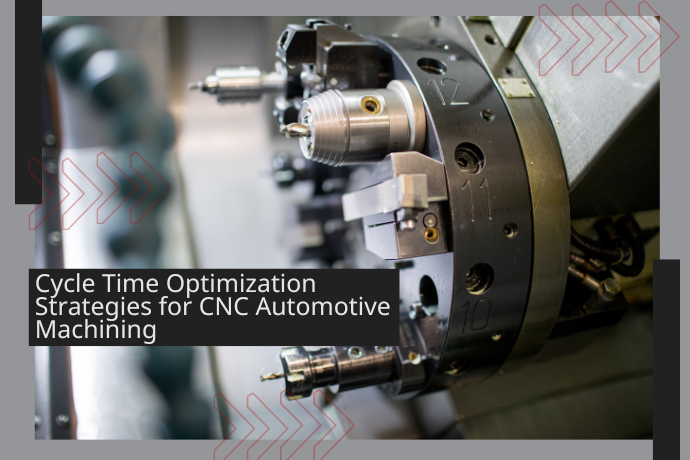Accelerate Production: Cycle Time Optimization Strategies for CNC Automotive Machining

To stay competitive in the automotive manufacturing industry, reducing CNC machining cycle time (Cycle Time) is essential. Cycle time directly impacts productivity, lead times, and cost efficiency. As automotive components become more complex and tolerances more demanding, optimizing every step of the machining process is increasingly important.
Key Factors Affecting Cycle Time in CNC Automotive Machining
Several factors can contribute to increased cycle time. Systematically eliminating these inefficiencies is the first step toward optimization:
- Frequent setup and changeover delays (Setup and Changeover Delays)
- Inefficient flow of materials between operations (Inefficient Material Flow)
- Manual tool changes or material handling (Manual Tool Changes or Material Handling)
- Unstable machining parameters (Unstable Machining Parameters)
- Rework due to quality issues (Rework Due to Quality Issues)
Minimizing these inefficiencies necessitates a systematic approach that includes process analysis, machine upgrades, and workforce development.
Applying Lean Manufacturing to Optimize CNC Cycle Time
Reducing cycle time starts with identifying and eliminating waste across the production line. Lean manufacturing encourages streamlining workflows, simplifying setup procedures, and standardizing work instructions.
These practices help reduce non-value-added activities, ensuring a smoother, faster machining process. One effective way to minimize changeover time is to use single-setup approaches, where multiple operations are completed under one machine setup. This strategy reduces idle time and improves spindle utilization.
Proven CNC Strategies to Reduce Cycle Time in Automotive Parts Production
1. Process Optimization and Bottleneck Analysis (Process Optimization)
Mapping the entire machining process helps identify bottlenecks. Whether due to delays in part movement, manual interventions, or prolonged tool change durations, targeted process improvements can significantly reduce overall cycle time.
2. Automation and Equipment Upgrades (Automation and Equipment Upgrades)
Automation plays a crucial role in minimizing manual handling and enhancing machining efficiency.
- For instance, upgrading to a machine equipped with a dual-spindle Vertical Machining Center (Dual-Spindle VMCs) enables the simultaneous machining of two parts. This configuration is particularly effective for high-volume automotive components, such as brake parts and engine housings.
- Other solutions include integrating an Automatic Pallet Changer into CNC machines, which allows for continuous operation during part loading and unloading.
3. Optimization of Tooling and Cutting Parameters (Tooling and Cutting Parameters)
Cycle time is affected by multiple factors, including tool life, material removal rate, and machine parameters. Using high-performance cutting tools and fine-tuning spindle speed, feed rate, and depth of cut can lead to faster, more stable machining. These adjustments are especially effective when dealing with hard alloys or complex geometries that demand aggressive cutting strategies.
4. Integration of Quality Control (Integration of Quality Control)
Defects and rework significantly contribute to extended cycle times. Integrating in-process inspection tools, such as probing systems or sensors, into the machining workflow can help detect issues early and prevent the need for re-machining. Stabilizing part accuracy at the source not only reduces post-process inspection time but also enhances overall workflow continuity.
5. Machine Selection for Complex Automotive Components (Machine Selection)
Advanced CNC equipment is engineered to manage complex components with high tolerances.
- 5-axis CNC Machining Centers and Multi-spindle CNC Milling Machines can perform multiple operations in a single cycle. These configurations reduce the need for tool changes, eliminate secondary setups, and support tighter tolerances, making them ideal for drivetrain components and structural brackets.
- For larger or longer workpieces, a flat-bed CNC lathe or heavy-duty CNC turning center offers the necessary rigidity and torque to ensure stable cutting performance throughout the machining cycle.
How Machine Configuration Affects CNC Cycle Time
Optimizing cycle time starts with selecting the right machine layout.
- A CNC Vertical Machining Center offers a compact footprint and high spindle speed, making it well-suited for parts that require fast material removal and short takt times.
- Multi-spindle CNC machines support parallel operations, effectively doubling output within the same cycle duration.
Both configurations reduce machining time, simplify part handling, and minimize the need for operator intervention.
Conclusion: Cycle Time Optimization with Union MT Solutions
Improving automotive parts machining cycle time requires a combination of process optimization, equipment upgrades, and efficient production planning. Manufacturers can enhance performance by adopting automation, upgrading to advanced CNC platforms, and minimizing non-productive time across the production line.
Union Mechatronic Inc. (Union MT) provides a full range of precision machining solutions—including vertical CNC machines, dual-spindle VMCs, and flat-bed lathes—designed to meet the needs of high-mix, high-volume automotive manufacturing. By reducing cycle time, manufacturers can increase output, improve part consistency, and enhance production flexibility.
**Ready to upgrade your machining performance?**
Contact Union MT today to explore **cycle-time-optimized CNC solutions** tailored for your automotive production needs.